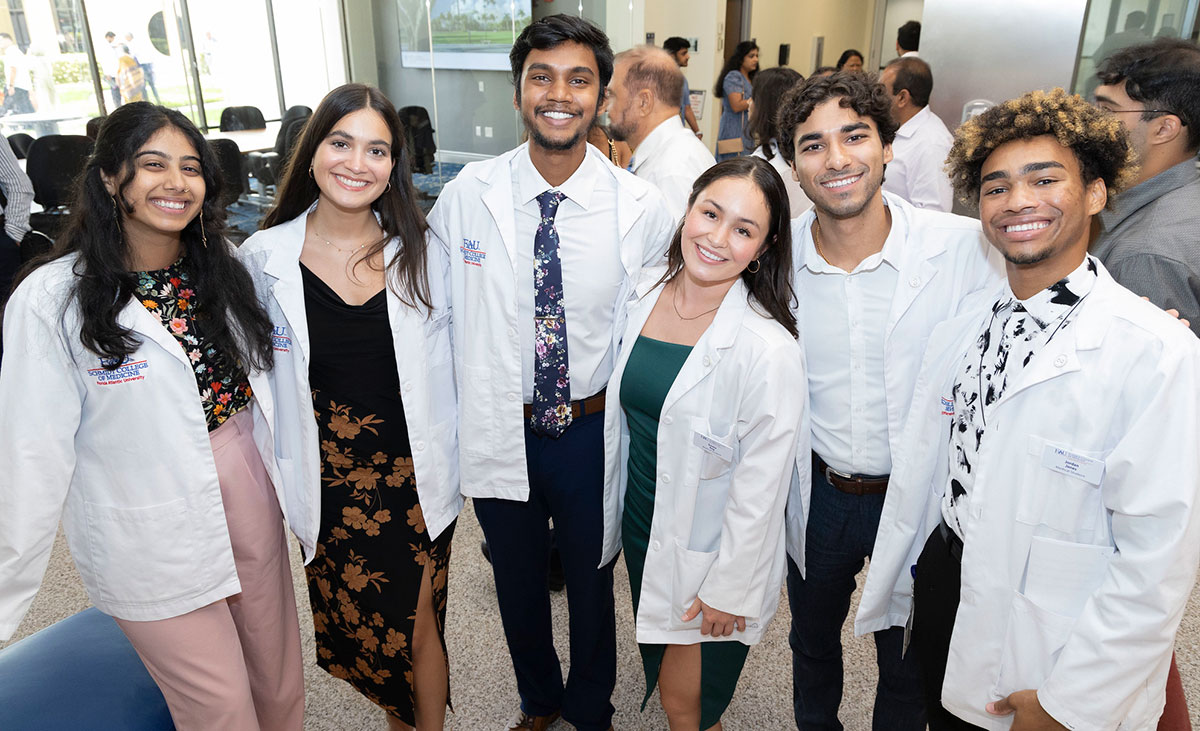Effective communication is a vital skill for med students, whether you’re presenting research, advocating for policy changes, or educating patients. Persuasive speeches not only help shape opinions but also enable you to convey complex medical ideas clearly and compellingly. Let’s explore persuasive speech topics that every med student should master, offering insights into why these topics matter, how to research and prepare persuasive arguments, and practical tips for delivering memorable speeches.
Why Persuasive Speaking Matters for Med Students
As future healthcare professionals, med students must be adept at communicating effectively with diverse audiences, from peers and mentors to patients and policymakers. Persuasive speaking is crucial for several reasons:
- Advocacy: Persuasive speeches allow you to advocate for meaningful change, whether addressing healthcare disparities or promoting public health initiatives.
- Leadership: The ability to persuade and inspire others is a key component of leadership. As a med student, mastering persuasive techniques helps prepare you for roles in clinical settings, academia, and beyond.
- Patient Education: Clear, convincing communication is essential in educating patients about treatment plans, preventative measures, and health behaviors.
- Career Advancement: Outstanding communication skills can set you apart in interviews, conferences, and academic presentations, enhancing your professional profile.
Mastering persuasive speech topics will refine your oratory skills and build the confidence needed to tackle complex issues and influence positive change within the medical community.
Key Persuasive Speech Topics for Med Students
Below are carefully selected persuasive speech topics that reflect current issues and challenges in healthcare. Each topic is designed to spark discussion, inspire action, and deepen your understanding of the medical field.
The Importance of Preventive Medicine
Preventive medicine focuses on reducing the risk of diseases before they occur, rather than treating them after they develop. In your speech, you can discuss the long-term benefits of preventive care, such as reducing healthcare costs, improving quality of life, and decreasing the burden on healthcare systems.
Key Points to Address:
- The economic impact of preventive healthcare.
- Strategies to encourage healthy lifestyles.
- Policy changes to support preventive measures
Healthcare Policy Reforms
Healthcare policies directly affect patient care and medical practice. Persuade your audience that reforms are needed to ensure equal access to quality healthcare. Discuss how changes in policy can lead to improved patient outcomes and a more sustainable healthcare system.
Key Points to Address:
- The role of government in healthcare.
- Comparing different healthcare systems worldwide.
- Proposals for affordable and accessible healthcare.
The Role of Technology in Medicine
Advancements in technology are revolutionizing medicine. Persuade your audience about the critical role of emerging technologies like artificial intelligence, telemedicine, and electronic health records in improving patient care, reducing errors, and optimizing treatment protocols.
Key Points to Address:
- The impact of digital health tools on diagnosis and treatment.
- Future trends in medical technology.
- Balancing technological innovation with patient privacy.
Addressing Healthcare Disparities
Healthcare disparities remain a significant challenge, with underserved communities often facing poorer health outcomes. In your speech, argue for targeted initiatives and policy interventions that address social determinants of health and promote equity in healthcare access.
Key Points to Address:
- Identifying and understanding disparities in healthcare.
- The impact of socioeconomic factors on health.
- Strategies to reduce inequalities in access to medical services.
Ethical Dilemmas in Modern Medicine
Ethics play a central role in medical practice. Persuade your audience to examine the ethical dilemmas that arise from advancements in medical research, patient autonomy, and the allocation of resources. Topics might include the ethics of genetic editing, end-of-life decisions, or the commercialization of healthcare.
Key Points to Address:
- Balancing patient autonomy with medical advice.
- Ethical considerations in emerging medical technologies.
- The role of ethics committees in healthcare institutions.
The Future of Personalized Medicine
Personalized medicine promises treatments tailored to individual genetic profiles, potentially revolutionizing patient care. Argue the benefits of personalized medicine in improving treatment outcomes, reducing side effects, and driving forward the frontier of medical research.
Key Points to Address:
- How personalized medicine differs from traditional approaches.
- The potential benefits and challenges.
- Future implications for patient care and healthcare costs.
Global Health Initiatives
Global health initiatives aim to improve health outcomes on a worldwide scale, particularly in low-resource settings. Persuade your audience on the importance of international collaboration in addressing pandemics, combating infectious diseases, and promoting public health education.
Key Points to Address:
- The impact of global health programs on disease prevention.
- Success stories from international health initiatives.
- The need for ongoing support and funding for global health projects.
The Debate Over Universal Healthcare
Universal healthcare remains a contentious topic in many countries. Craft a persuasive argument for or against universal healthcare, examining its potential to provide equal access to healthcare services and its economic implications.
Key Points to Address:
- Comparisons between universal healthcare and other models.
- The benefits of providing healthcare as a human right.
- Economic challenges and potential solutions.
Mental Health Awareness in Medical Education
Mental health is a critical component of overall well-being, yet it often receives less attention in medical education. Persuade your audience on the need to incorporate robust mental health support and education for med students, addressing the stressors of the medical profession and promoting a healthier learning environment.
Key Points to Address:
- The prevalence of mental health issues among med students.
- Strategies for integrating mental health education into the curriculum.
- The long-term benefits of supporting mental well-being.
The Impact of Telemedicine on Patient Care
Telemedicine has emerged as a critical tool in modern healthcare, especially in remote or underserved areas. Persuade your audience of the advantages of telemedicine, including improved access to care, reduced travel time for patients, and enhanced efficiency in healthcare delivery.
Key Points to Address:
- The evolution and current state of telemedicine.
- Benefits and limitations of remote patient care.
- Future trends and potential improvements in telehealth services.
The Role of Medical Research in Shaping Healthcare
Medical research is the cornerstone of advancements in patient care and treatment methodologies. Persuade your audience on the importance of continuous research investment, innovation, and evidence-based practice to drive progress in medicine.
Key Points to Address:
- How research informs clinical practice.
- The benefits of funding and supporting medical research.
- The challenges and ethical considerations in medical research.
The Significance of Interdisciplinary Collaboration
Modern healthcare increasingly relies on interdisciplinary collaboration, integrating insights from various fields such as technology, psychology, and public health. Argue the importance of fostering collaboration among different specialties to enhance patient outcomes and drive innovation in medicine.
Key Points to Address:
- Examples of successful interdisciplinary projects.
- The benefits of diverse perspectives in healthcare.
- Strategies to promote collaboration among healthcare professionals.
The Future of Medical Education
Medical education is constantly evolving to meet the demands of a rapidly changing healthcare environment. Persuade your audience that adapting medical education methods, such as incorporating simulation training and online learning, is essential to prepare future physicians for real-world challenges.
Key Points to Address:
- Innovations in medical education and training.
- The impact of technology on learning and skills acquisition.
- Future trends in shaping a modern medical curriculum.
Addressing the Opioid Crisis
The opioid crisis continues to be a significant public health challenge. Persuade your audience about the need for comprehensive strategies that include better pain management, stricter regulations, and increased support for addiction treatment programs to curb the epidemic.
Key Points to Address:
- The role of healthcare providers in addressing opioid misuse.
- Policy initiatives to prevent opioid addiction.
- The importance of support systems for recovering patients.
Promoting Environmental Health in Medicine
Environmental factors play a significant role in public health. Persuade your audience on the need for greater integration of environmental health considerations into medical practice and public policy, emphasizing the impact of pollution, climate change, and resource management on overall health.
Key Points to Address:
- The relationship between environmental conditions and health outcomes.
- Strategies for incorporating environmental health into patient care.
- Policy measures to address environmental health challenges.
How to Craft a Persuasive Speech
Persuasion is both an art and a science. For med students, crafting a persuasive speech means combining factual evidence with emotional appeal. Here are some strategies to help you develop effective speeches:
Research Thoroughly
Begin by gathering credible data, statistics, and case studies that support your argument. Peer-reviewed journals, official health organizations, and reputable news sources are excellent places to start.
Structure Your Argument
A clear structure is essential for a persuasive speech. Typically, your speech should include:
- Introduction: Capture attention with a compelling hook and introduce your thesis.
- Body: Present your arguments logically, with each point supported by evidence.
- Conclusion: Summarize your key points and leave your audience with a call to action.
Use Emotional and Logical Appeals
Blend logical appeals (logos) with emotional appeals (pathos) to connect with your audience. While data and evidence are crucial, storytelling and relatable examples can make your message more impactful.
Practice Delivery
The effectiveness of a persuasive speech is also determined by your delivery. Practice speaking clearly, using appropriate body language, and varying your tone to maintain audience interest. Rehearse in front of peers or mentors to gain constructive feedback.
Tips for Mastering Persuasive Speech Topics
Know Your Audience
Understanding your audience is key. Tailor your language, tone, and examples to resonate with the specific interests and concerns of your listeners—be they fellow students, faculty, or healthcare professionals.
Anticipate Counterarguments
A persuasive speech is more convincing when it addresses potential counterarguments. By acknowledging and refuting opposing views, you demonstrate a thorough understanding of the topic and strengthen your overall argument.
Use Visual Aids
Visual aids like slides, charts, or graphs can help clarify complex information and make your speech more engaging. Ensure that any visuals used are clear, concise, and directly relevant to your message.
Practice Active Listening
Engage with feedback from your audience both before and after your speech. Constructive criticism is invaluable in refining your message and improving your delivery for future presentations.
Stay Current
Healthcare is a dynamic field. Keep your speech topics relevant by staying updated on the latest developments, research findings, and policy changes in medicine. This will not only enrich your content but also establish you as a knowledgeable speaker.
Example Preventive Medicine: The Key to a Healthier Future
Ladies and gentlemen, distinguished colleagues and future leaders in healthcare,
Notes:
- Audience Engagement: The salutation addresses various segments of the audience, establishing respect and rapport.
- Attention-Grabbing Title: The title sets a clear focus on preventive medicine, immediately informing the audience of the topic.
- Inclusive Tone: By acknowledging “future leaders in healthcare,” the speaker connects with med students and professionals, making the audience feel personally involved.
Today, I stand before you to advocate for a shift in our healthcare paradigm—one that emphasizes the power of prevention over the burden of treatment. Preventive medicine is not merely a concept; it is the cornerstone of a healthier future, a proactive strategy that can change lives, reduce healthcare costs, and elevate the quality of care for all communities.
Notes:
- Clear Thesis Statement: The speaker outlines the central argument—shifting from treatment to prevention.
- Logical Appeal: Presents a rational argument about the benefits of preventive medicine (transforming lives, reducing costs, and elevating care).
- Authority and Confidence: The confident tone builds credibility, positioning the speaker as knowledgeable and persuasive.
Imagine a world where diseases are intercepted before they take hold—a world where conditions like diabetes, heart disease, and cancer are identified early and managed with lifestyle changes, community support, and timely interventions. This is not a distant dream; it is within our reach through preventive medicine.
Notes:
- Emotional Appeal (Pathos): The paragraph uses vivid imagery to help the audience visualize a better future, engaging their emotions.
- Call to Imagination: Invites the audience to imagine a practical and hopeful scenario, which makes the concept relatable.
- Optimism: Emphasizes that the desired future is achievable, instilling hope and motivating action.
Preventive medicine is our best defense against the rising tide of chronic diseases. By investing in regular screenings, public health education, and early intervention programs, we can empower individuals to take charge of their health. This proactive approach not only improves individual outcomes but also alleviates the overwhelming pressure on our healthcare systems. When we prioritize prevention, we shift the focus from reactive treatment to proactive wellness, creating healthier, more vibrant communities.
Notes:
- Logical Appeal (Logos): Provides concrete examples (screenings, education, early intervention) to support the argument.
- Benefits Highlighted: Demonstrates both individual and systemic benefits, strengthening the argument with evidence and logical reasoning.
- Community Impact: Reinforces how preventive care can transform entire communities, broadening the scope of the message.
Consider the economic implications: millions of dollars spent on treating advanced diseases could instead be redirected toward preventive initiatives. Research consistently shows that every dollar invested in preventive healthcare saves multiple dollars in future treatment costs. This is not just an investment in health—it’s an investment in our collective future. By reducing the incidence of preventable diseases, we can allocate resources more efficiently, ensuring that our healthcare system remains sustainable for generations to come.
Notes:
- Data-Driven Appeal: The paragraph incorporates economic logic and research findings, appealing to the audience’s rationality.
- Future Orientation: Emphasizes long-term sustainability and resource efficiency, making the argument more compelling for policy makers and healthcare leaders.
- Cost-Benefit Analysis: Illustrates how preventive care can result in financial savings, strengthening the argument through practical implications.
However, preventive medicine is about more than economics. It concerns human dignity, quality of life, and the fundamental right to a healthy existence. Every screening, every educational program, and every community outreach initiative is a step toward a society where health disparities are diminished, and every individual has the opportunity to live a fulfilling, disease-free life. In underserved communities, where access to healthcare is often limited, preventive measures can be a lifeline—an opportunity to break the cycle of poverty and ill health that has persisted for far too long.
Notes:
- Ethical Appeal: Shifts the focus from financial benefits to moral imperatives, stressing human dignity and equality.
- Emotional Engagement: Uses powerful language to evoke empathy, urging the audience to consider the social justice aspect of healthcare.
- Broader Impact: Highlights how preventive measures can address systemic inequalities, appealing to the audience’s sense of responsibility.
I urge you all, as emerging healthcare professionals, to champion the cause of preventive medicine. Educate your peers, advocate for policy changes, and embrace preventive strategies in your practice. Let us lead by example, proving that when we invest in prevention, we invest in a future where healthcare is not a privilege for a few but a guarantee for all.
Notes:
- Direct Call to Action: Encourages the audience to take specific actions (educate, advocate, lead by example), mobilizing them toward change.
- Inclusive Language: Uses “we” and “us” to foster a sense of collective responsibility and unity among healthcare professionals.
- Inspiration: The language is motivational, aiming to empower the audience to become change-makers in their field.
In conclusion, let us remember that the most effective cure is prevention. By shifting our focus to preventive medicine, we are not only safeguarding individual health—we are paving the way for a brighter, more equitable future for our society. I challenge you to take this message to heart, to be the change-makers who drive forward the revolution of preventive healthcare, and to create a legacy of wellness that transcends generations.
Notes:
- Summary of Key Points: Recaps the main arguments, reinforcing the central thesis.
- Emotional and Logical Synthesis: Merges both emotional and logical appeals to leave a lasting impact.
- Empowering Conclusion: Ends with a powerful challenge, encouraging the audience to take personal responsibility and act on the message, ensuring the speech resonates well beyond the presentation.
Thank you.
Final Thoughts
Mastering persuasive speech topics is an essential skill for every med student. Whether you’re advocating for healthcare reforms, promoting public health initiatives, or discussing cutting-edge medical technologies, the ability to communicate persuasively will serve you well throughout your career.
By choosing compelling topics and honing your argumentation skills, you can effectively influence opinions, inspire change, and drive forward important conversations in the medical field. As you develop your persuasive speaking abilities, remember that practice, research, and self-reflection are your greatest allies.
Embrace these topics, refine your message, and take every opportunity to speak publicly. Your words can have an impact far beyond the classroom, shaping the future of healthcare and the lives of those you serve.
Whether preparing for a class presentation, a conference, or a debate on current medical issues, the topics and techniques outlined in this guide will help you craft persuasive, impactful speeches that resonate with your audience. Step up, speak out, and let your passion for medicine shine through every word you deliver.





